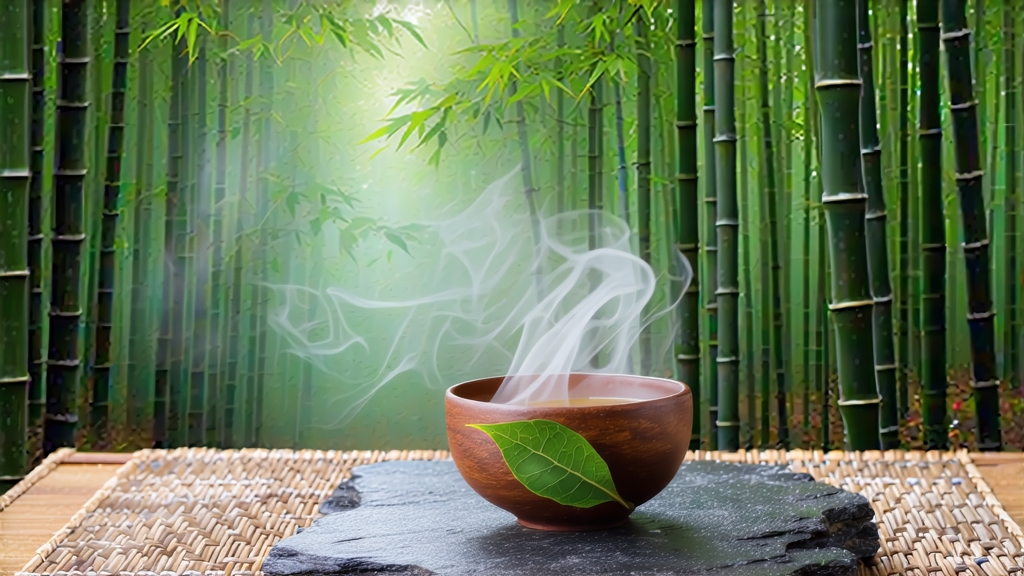
High in the mist-cradled Meng Ding Mountain of Ya’an, Sichuan, a tea once reserved for emperors still unfurls its golden buds every early April. Meng Ding Huang Ya—literally “Meng Ding Yellow Bud”—is the least-known yet most aristocratic member of China’s yellow tea family. While green tea dominates export shelves and dark pu-erh fills investment vaults, this yellow gem remains a quiet guardian of Tang-dynasty elegance, a flavor that once traveled the Tea-Horse Road and soothed the throat of a Song-era poet before he brushed his verses onto silk. To understand it is to step into a pocket of time where color, aroma and craft pause between oxidation and freshness, creating a liquor that glows like late-afternoon sunlight on bamboo.
History: From Imperial Tribute to Mountain Secret
The first written record appears in the Chronicles of Meng Ding compiled during the Tang dynasty (618-907 CE), when local monks presented “small yellow buds” to Emperor Xuanzong. The court’s tea bureau noted the leaf’s “three yellows”—yellow bud, yellow soup, yellow leaf bottom—and listed it among the fourteen tribute teas nationwide. Caravans leaving Ya’an for Tibet carried bricks of dark tea, but a single muleteer always kept a sealed tin of Meng Ding Huang Ya for the governor of Lhasa, a secret currency more valuable than silver. When Ming-dynasty maritime trade shifted attention to Fujian wulongs, the mountain gardens shrank; by the 1980s fewer than thirty families still mastered the “sealed yellowing” technique. A 2006 government initiative to revive lost tribute teas replanted heirloom shrubs from clonal cuttings hidden in monastery walls, and today about 180 hectares survive between 800 m and 1,400 m elevation, shrouded in cloud 280 days a year.
Micro-Terroir: Where Clouds Polish the Leaf
Meng Ding’s northern Sichuan location traps humid air from the Qinghai-Tibet Plateau and the Sichuan Basin, creating a natural greenhouse that delays spring budding. The soil is a crumbly yellow loam rich in selenium and eroded granite; its pH of 5.2 mirrors the exact acidity preferred by the small-leaf Camellia sinensis var. sinensis bushes. Temperature swings of 10 °C between day and night slow amino-acid metabolism, concentrating L-theanine and giving the tea its signature sweet-broth umami. Farmers insist that leaves plucked when the mountain fog lifts before 9 a.m. carry “water qi,” a local term for the balance of surface moisture and internal sap that prevents premature enzymatic browning.
Plucking Standard: One Bud, One Leaf, One Inch
Unlike green teas that accept open leaves, Meng Ding Huang Ya demands the tight “sparrow’s tongue” pluck—bud plus half-expanded first leaf, no longer than 2.5 cm. Experienced pickers use a twisting snap rather than a pull, leaving the woody stem intact to preserve the bush for the next flush. Daily yield per worker averages only 600 g fresh leaf, translating into 120 g finished tea after the elaborate yellowing process. Such selectivity means that an entire hillside supplies barely enough for 3,000 small tins each spring.
Craft: The 72-Hour “Men Huang” Dance
Yellow tea’s identity rests on a non-enzymatic oxidation step called men huang—literally “sealed yellowing.” After a brief outdoor withering of two hours, the buds are wok-fired at 160 °C for three minutes to kill green enzymes, a temperature high enough to halt oxidation yet low enough to keep 8–10 % residual moisture. While still warm, the leaf is wrapped in stacks of steamed cotton cloth and placed inside a bamboo chamber maintained at 28 °C and 75 % humidity. Every forty minutes the master opens the bundle, fluffs the leaf to redistribute heat, then re-wraps. Over three days the chlorophyll slowly degrades into pheophytin, carotenoids intensify, and catechins dimerize, creating a golden liquor and mellow apricot note impossible in green tea. The final low-temperature bake at 60 °C for two hours locks in fragrance while reducing moisture to 5 %, ensuring decade-long aging potential.
Grades & Styles
1) Jade-tip Supreme: 100 % buds, harvested before Qingming festival, needle-shaped, downy, produces a champagne-colored infusion